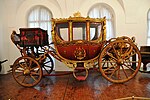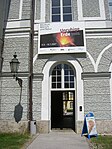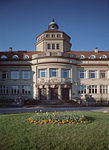International Amateur Handball Federation
1928 establishments in the NetherlandsBasketball governing bodiesHandball governing bodiesIOC-recognised international federationsInternational organisations based in Germany ... and 4 more
International sports organizationsOrganisations based in MunichSports organizations established in 1928Volleyball organizations
The International Amateur Handball Federation (IAHF) was the administrative and controlling body for handball and field handball. IAHF was responsible for the organisation of handball's major international tournaments, notably the World Men's Handball Championship, which commenced in 1938, and the World Men's Outdoor Handball Championship, which commenced in 1938. The organization was dissolved after World War II.
Excerpt from the Wikipedia article International Amateur Handball Federation (License: CC BY-SA 3.0, Authors).International Amateur Handball Federation
Notburgastraße, Munich Nymphenburg
Geographical coordinates (GPS) Address Nearby Places Show on map
Geographical coordinates (GPS)
| Latitude | Longitude |
|---|---|
| N 48.15597 ° | E 11.5114813 ° |
Address
Notburgastraße 16
80639 Munich, Nymphenburg
Bavaria, Germany
Open on Google Maps









